First thanks for the pictures - lets me know where your currently at
Let me try this - here is my recommendation if I offer a step that you already have completed just skip over it - some of the details (like the rear wheelwells are not clear from the angle you provided.
Lets doe firewall rearward and firewall forward in no particular order
Rearward.
1- Spray the rear wheelwells with sound deadener - heavy application as shown above continuing onto the frame rail surface and floor between the frame and wheel well.
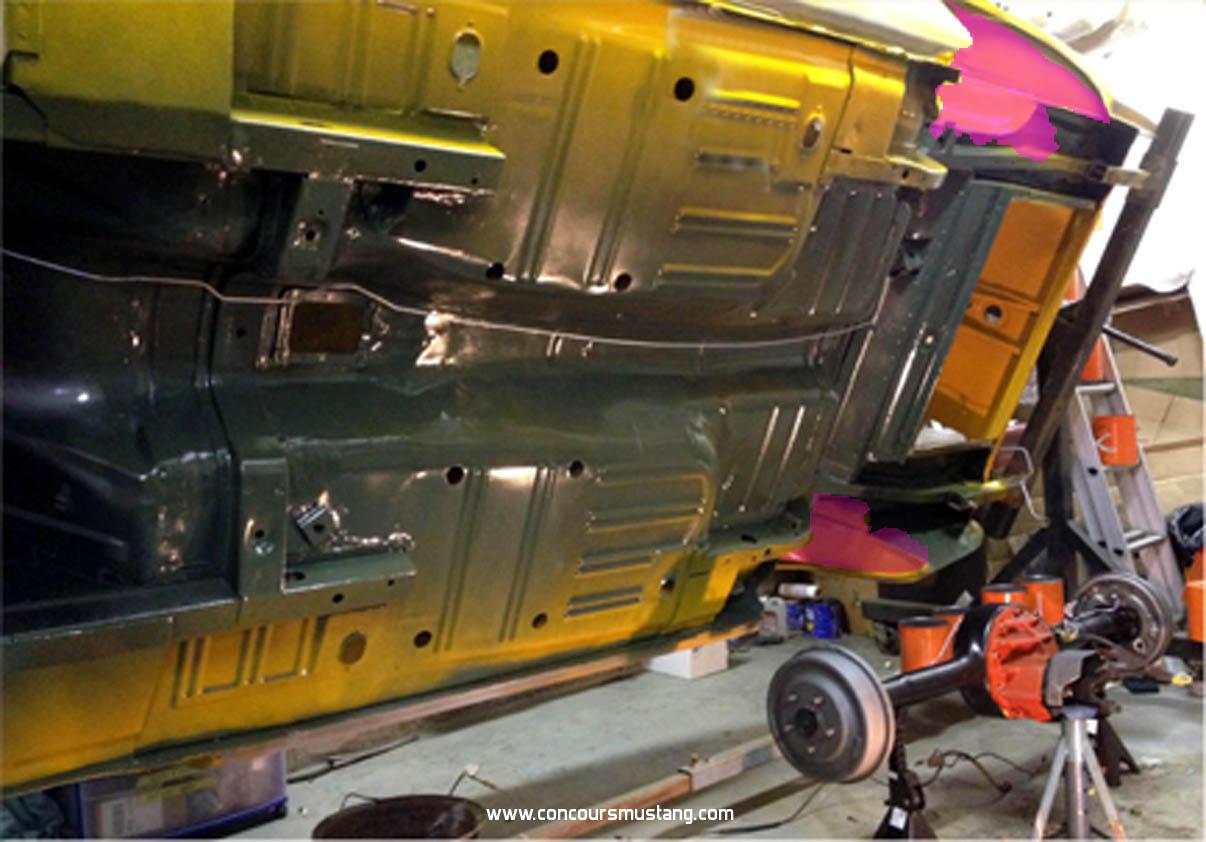
2- Respray your exterior color over this newly applied material and if you choose add more down the length of the car inward if you choose to blend it in that way. Did notice you left off the 10 dolly marks what would have been visible originally
3- Soft tape or mask the bottom edge of the rocker panel and rear section of quarter panel approx 1/2" from the pinch weld and spray black out onto the rocker and quarter panel allowing the black overspray to flow onto the floors, front frame rails and other surfaces directly behind and slightly above the pinch weld. Its not unusual for the black to extend slightly into the rear wheelwell as the painter moved the gun to the end then shout off the flow, only to begin again at the other end of the wheel wells. Application would also produce a shadow approx 2" wide behind the pinch weld. Forgive me for my quickly thrown together illustrations

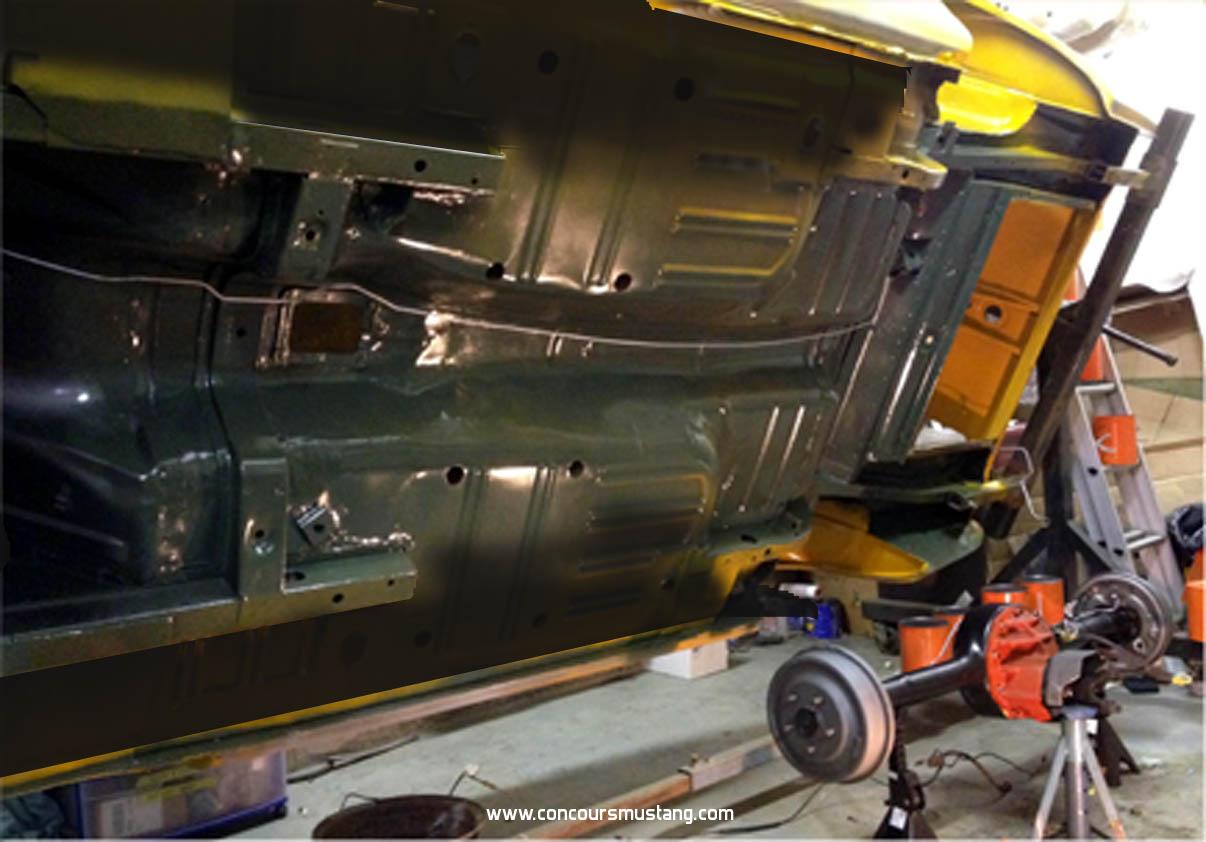
4- Using a black flexible smooth chalking chalk heavily the inner seat belt mounting brackets and run a brushed ribbon of the product along the rocker to floor seam as well as the bottom edge of the trunk drop on both sides
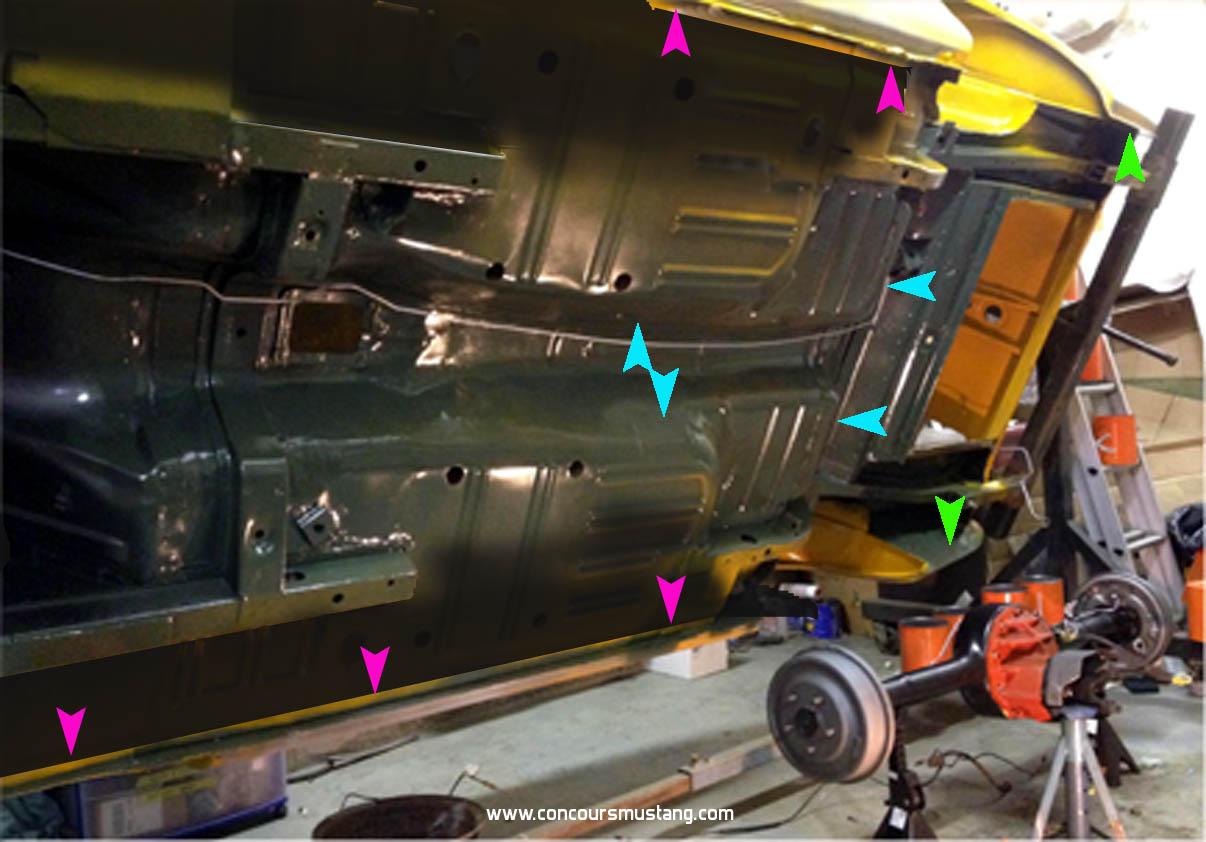
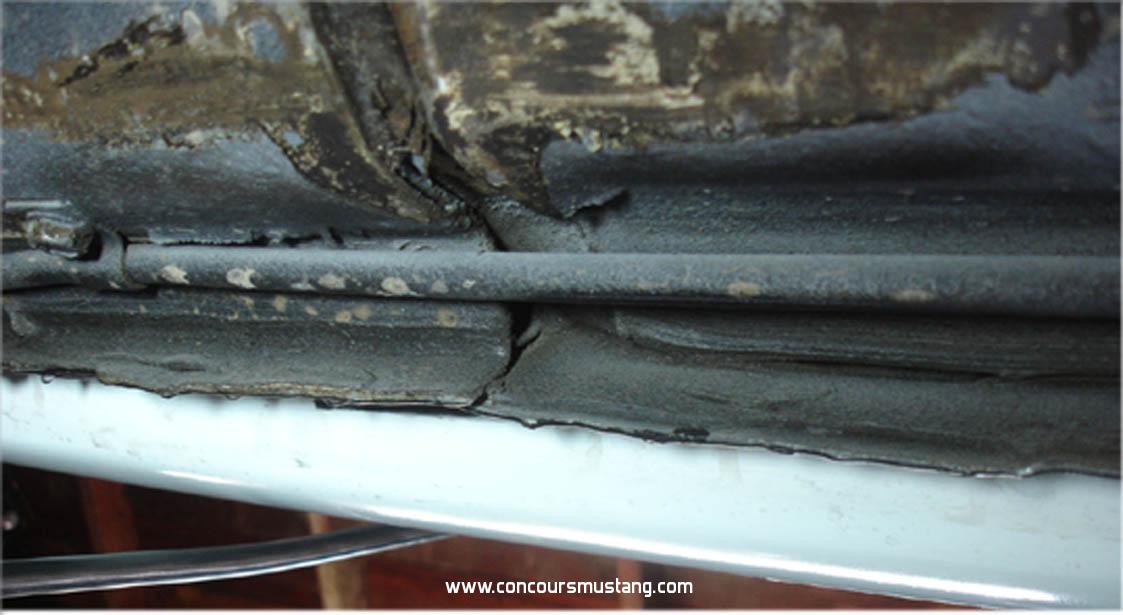

Issues - Noticed that you shot the car without the rear valance in place or the rear bumper guard brackets in place. the amount of overspray on the trunk drops we see in you picture would be impossible (along with what looks like orange on the rear cross member) if the valance was there. That will need to be corrected somehow.
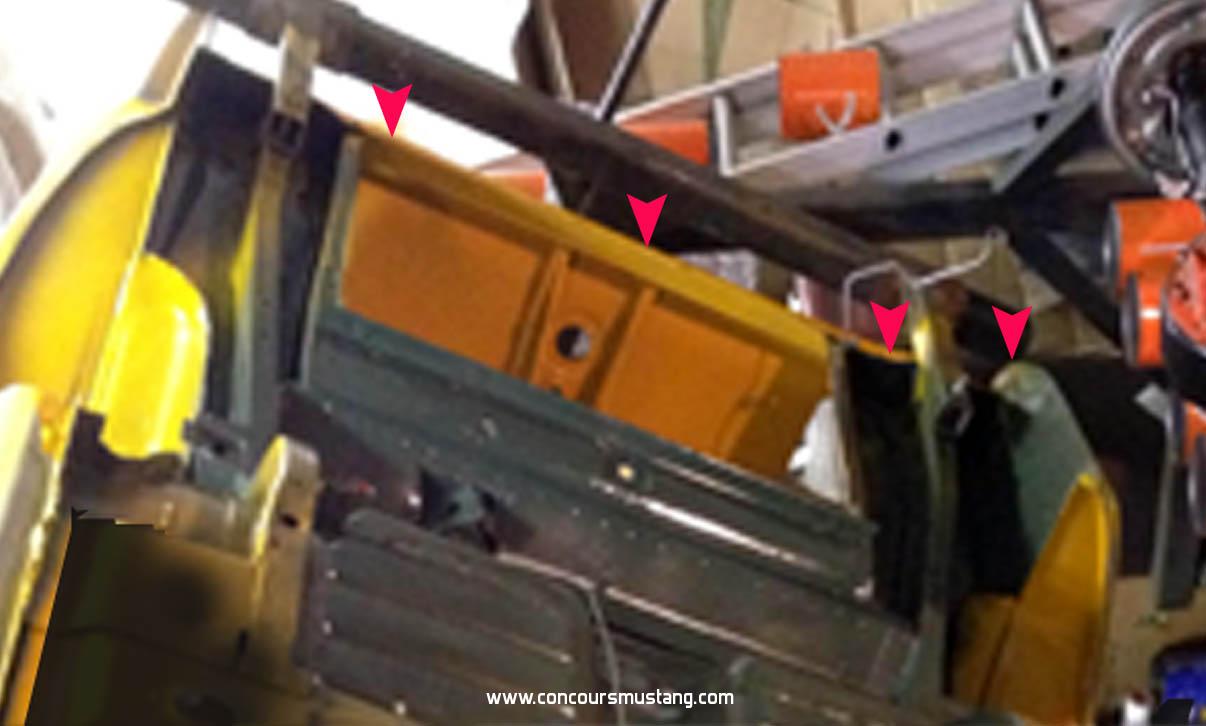
Front wheel wells Next
